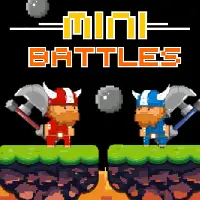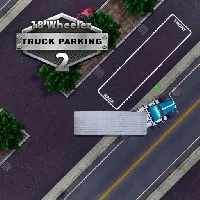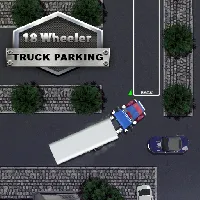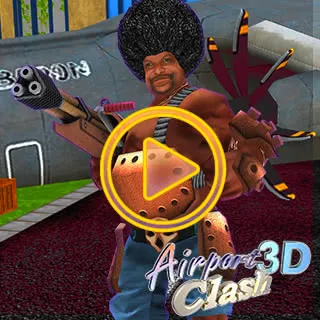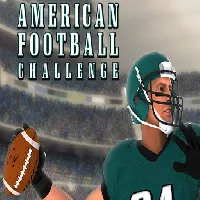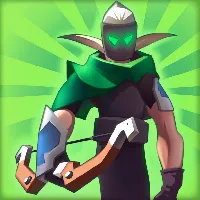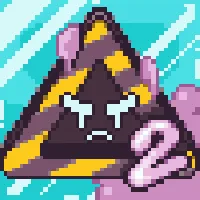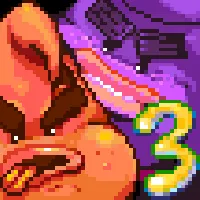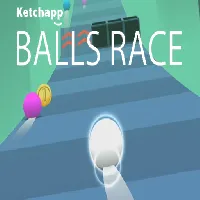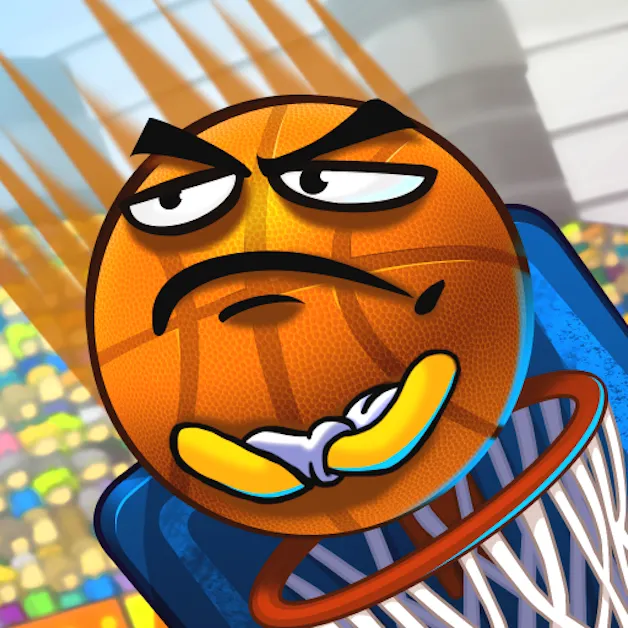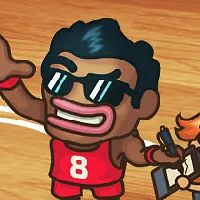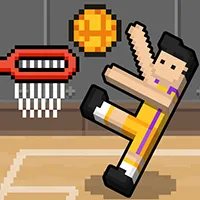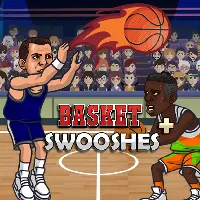BLOONS TOWER DEFENSE 3
SIMILAR GAMES
Description
Bloons Tower Defense 3 - GamePluto
About Bloons Tower Defense 3 - GamePluto
Welcome to our comprehensive exploration of Bloons Tower Defense 3, a cornerstone in the beloved tower defense genre. As players, we have long been captivated by the strategic depth and addictive gameplay that Bloons Tower Defense 3 offers. This installment, available on GamePluto, continues the legacy of challenging our tactical prowess against relentless waves of colorful, yet formidable, bloons. Our journey through the world of Bloons Tower Defense 3 is not merely about deploying monkeys and upgrading their abilities; it is a meticulous exercise in resource management, strategic placement, and anticipating the evolving threats that confront us at every turn. We delve into the core mechanics that make this game a perennial favorite, examining the diverse array of towers, the unique properties of different bloon types, and the intricate map designs that demand creative solutions. For enthusiasts seeking to master this classic title, understanding the nuances of each element is paramount to achieving victory against increasingly difficult challenges. We are committed to providing an in-depth guide that illuminates the path to becoming a true Bloons Tower Defense 3 master.
Unveiling the Core Gameplay of Bloons Tower Defense 3
At its heart, Bloons Tower Defense 3 is a game of strategic defense. We are tasked with preventing waves of advancing bloons from reaching the end of a predetermined path. Our primary tools for this mission are a variety of monkeys, each equipped with distinct offensive capabilities and upgrade paths. The fundamental premise is simple: place your monkeys strategically along the path to intercept and pop as many bloons as possible before they breach your defenses. However, the true brilliance of Bloons Tower Defense 3 lies in the emergent complexity that arises from this straightforward concept. We must carefully consider the strengths and weaknesses of each monkey type, the types of bloons that will appear, and the layout of the map itself. Timing is also crucial; certain upgrades and abilities are best deployed at specific moments to maximize their effectiveness. The economy of the game, where players earn money for popping bloons and use it to purchase more monkeys and upgrades, adds another layer of strategic decision-making. Every dollar spent must be a calculated investment, as a poorly placed tower or an ill-timed upgrade can spell disaster. We find ourselves constantly adapting our strategies, learning from each wave, and refining our approach to overcome the ever-increasing difficulty.
The Arsenal of Monkey Towers
The diverse monkey tower selection is a cornerstone of Bloons Tower Defense 3's strategic depth. Each tower offers a unique specialization, allowing for a wide range of defensive compositions. Understanding these units is key to formulating effective strategies. We will explore some of the most impactful monkeys available:
- Dart Monkey: The foundational unit, offering rapid-fire darts. While basic, its cost-effectiveness makes it a staple in early-game defense and a crucial component for building up initial offensive power. Its upgrades focus on increasing dart speed, range, and projectile count.
- Boomerang Monkey: Excelling at hitting multiple bloons with its returning projectiles. Its upgrades allow it to throw faster, with more darts, and even unleash devastating sonic attacks that can stun groups of bloons.
- Bomb Shooter: A specialist in area-of-effect damage, perfect for dealing with tightly packed groups of bloons. Its upgrades enhance its explosive power, range, and the ability to launch seeking bombs.
- Tack Shooter: Deploys a barrage of sharp tacks in a circular pattern, ideal for covering choke points and areas where bloons are forced to bunch up. Upgrades focus on increasing tack speed, range, and the number of tacks fired.
- Ice Monkey: Primarily a support tower that slows down bloons, making them easier targets for other monkeys. Its upgrades can freeze bloons solid, turning them into vulnerable targets, or even cause them to take extra damage.
- Glue Gunner: Similar to the Ice Monkey, the Glue Gunner slows bloons, but also reduces their defensive capabilities and can affect multiple bloons in its spray. Upgrades introduce corrosive glue that damages bloons over time.
- Sniper Monkey: Offers long-range, high-damage shots capable of popping individual bloons from across the map. Its upgrades allow it to fire faster, hit multiple targets, and even gain the ability to take down fortified bloons with a single, powerful shot.
- Super Monkey: The ultimate offensive monkey, capable of unleashing a torrent of powerful projectiles. While expensive, its sheer firepower can turn the tide of any battle, especially when fully upgraded.
- Ninja Monkey: Known for its high attack speed and ability to throw shurikens that can pop multiple bloons. Its upgrades enhance its speed, add explosive shurikens, and grant it the ability to detect and pop invisible bloons.
- Monkey Apprentice: A versatile magic user with elemental attacks. Its upgrades allow it to cast powerful spells like fireballs, lightning storms, and even summon tornadoes to disrupt bloon waves.
The synergistic interplay between these different monkey types is where the true strategic depth of Bloons Tower Defense 3 unfolds. We must learn how to combine their strengths, such as using an Ice Monkey to slow bloons for a Bomb Shooter's area attack, or employing a Sniper Monkey to pick off high-threat targets while other towers handle the main wave.
Understanding the Bloon Menace
The success of any defense in Bloons Tower Defense 3 hinges on our ability to understand and counter the diverse array of bloon types. These seemingly simple airborne adversaries come with a surprising range of properties that necessitate varied tactical approaches. We cannot simply deploy the same defense against every wave; adaptation is key.
Basic Bloon Types and Their Challenges
- Red Bloons: The most basic and weakest bloon. They are popped by a single projectile.
- Blue Bloons: Slightly tougher than red bloons, requiring two hits to pop.
- Green Bloons: Require three hits to pop.
- Yellow Bloons: Require four hits to pop and move slightly faster than red, blue, and green bloons.
- Pink Bloons: Require five hits to pop and are significantly faster than the preceding colors.
- Black Bloons: Are resistant to explosive damage, meaning Bomb Shooters and certain other attacks are less effective against them.
- White Bloons: Are resistant to freezing damage, making Ice Monkeys and similar abilities less potent.
- Zebra Bloons: Are resistant to both explosive and freezing damage, and also split into one red and one blue bloon when popped.
- Rainbow Bloons: These highly resilient bloons are resistant to explosive, freezing, and lightning damage. Upon being popped, they split into one red and one yellow bloon.
Specialist Bloon Threats
- Ceramic Bloons: These are exceptionally tough bloons that, when popped, release four faster, stronger bloons (usually red, blue, green, or yellow). Dealing with ceramic rushes requires significant sustained damage and crowd control.
- Lead Bloons: Immune to normal dart projectiles. They require specialized damage types such as those from Bomb Shooters, Sniper Monkeys, or certain upgrades of other towers.
- Camo Bloons: These bloons are invisible to most monkey towers. To attack them, we require monkeys with camouflage detection abilities, such as the Ninja Monkey or specific upgrades on other towers.
- Fortified Bloons: These bloons have a metallic sheen and are significantly tougher, with more health and often moving slower, making them more susceptible to sustained damage but requiring more hits to pop.
- MOABs (Massive Ornithological Attack Planes): The introduction of MOABs marks a significant escalation in difficulty. These are giant, blimp-like structures that contain multiple layers of other bloons inside. Popping a MOAB reveals a cluster of ceramic bloons, requiring rapid damage output and effective crowd control to deal with the ensuing threat.
- BFBs (Big Bloon Bombs): Even larger than MOABs, BFBs contain multiple MOABs, which in turn contain further bloons. Defeating a BFB requires immense firepower and strategic planning.
- ZOMGs (Zeppelin Of Monkey Obliteration): The largest and most formidable of the bloon types. ZOMGs contain multiple BFBs, making them the ultimate test of a player's defensive setup.
Our strategic approach must account for the presence of these special bloons. For example, a wave with numerous Camo Bloons would be disastrous without adequate detection, while a wave of Ceramic Bloons would overwhelm a defense lacking in crowd control. The economic implications are also significant; popping bloons like MOABs provides substantial money, but failing to do so can result in losing the game.
Mastering the Maps and Their Strategic Implications
The maps in Bloons Tower Defense 3 are not merely backdrops; they are integral components of the gameplay that profoundly influence strategic decisions. Each map presents unique challenges and opportunities, demanding that we adapt our monkey placement and upgrade priorities accordingly. The path the bloons take, choke points, and available deployment zones all play a crucial role in determining the optimal defensive strategy. We find that understanding the intricacies of each environment is just as important as understanding the bloons and towers themselves.
Key Map Features and Their Impact
- Path Length and Complexity: Longer paths offer more time to engage bloons, but can also spread out defenses too thinly. Maps with multiple paths or intersections require careful consideration of where to place towers to cover all angles.
- Choke Points: Narrow sections of the map are ideal for concentrating monkey fire. Towers like the Tack Shooter or Bomb Shooter excel in these areas, maximizing their damage output.
- Line of Sight: Some maps may have obstacles that block the line of sight for certain monkey towers. Understanding these limitations is vital for effective placement, especially for long-range towers like the Sniper Monkey.
- Open Spaces: Areas with ample room allow for the placement of a wider variety of monkeys and offer more flexibility in positioning.
- Water and Land: Certain maps feature bodies of water, which may restrict the placement of land-based monkeys but often open up possibilities for specialized water towers (though less common in BTD3 than later installments).
- Starting and Ending Points: The proximity of the start and end points of the bloon path influences the urgency of early-game defense and the importance of mid-to-late game upgrades.
We often find ourselves surveying a new map, mentally charting the bloon path, identifying potential kill zones, and considering the best initial monkey placements. For instance, on a map with a long, winding path, a reliance on fast-firing dart towers might be effective initially, while a map with tight turns and choke points would favor splash damage from Bomb Shooters. The introduction of special bloon types like Camo Bloons or Lead Bloons further emphasizes the need for map-specific strategies. We might dedicate specific zones for Camo detection or ensure adequate coverage for Lead Bloon popping power before such waves even appear.
Advanced Strategies for Dominating Bloons Tower Defense 3
To truly excel in Bloons Tower Defense 3, players must move beyond basic defenses and implement advanced strategies that exploit the game's mechanics to their fullest. This involves a deep understanding of tower synergies, economic management, and proactive threat assessment. We have learned that success is not just about reacting to threats, but about anticipating them and building a defense that is resilient and efficient.
Synergistic Tower Combinations
The most potent defenses are rarely built on a single powerful tower, but rather on the intelligent combination of multiple monkeys. We aim to create synergistic relationships where the strengths of one tower compensate for the weaknesses of another, and vice versa. For example:
- Slow and Damage: Combining an Ice Monkey or Glue Gunner with high-damage towers like the Super Monkey or Bomb Shooter is a classic strategy. The slow effect groups bloons and keeps them in the damage zone for longer.
- Camo Detection and Attack: A Ninja Monkey or a Monkey Village with Camo detection upgrades can make all nearby monkeys target Camo Bloons, significantly boosting your ability to deal with these otherwise elusive threats.
- Buffing and Debuffing: The Monkey Village, when upgraded, can provide significant attack speed and range buffs to nearby monkeys. Conversely, the ability to debuff bloons with effects like weakened armor can make them easier targets for all towers.
- Targeted Elimination: Using long-range, high-damage towers like the Sniper Monkey to pick off high-threat bloons (like MOABs or Ceramic rushes) while less expensive towers handle the bulk of the normal bloon waves is an efficient use of resources.
Economic Management and Timing
Mastering the economy is paramount. Every dollar earned must be a strategic investment. We consider the following:
- Early Game Efficiency: Focusing on cost-effective towers that can handle the initial waves without draining your resources is crucial. This allows for a stronger economy to be built for later rounds.
- Upgrade Priorities: Not all upgrades are created equal. We prioritize upgrades that offer the most significant boost in damage, utility, or efficiency for the cost, based on the current and anticipated bloon threats.
- Strategic Spending on MOABs: While MOABs provide substantial money, spending too much on towers that are only effective against them early on can leave you vulnerable to swarms of smaller bloons. Finding the right balance is key.
- Saving for Key Towers: Sometimes, the best strategy involves saving up for a high-tier tower or a critical upgrade that will dominate later rounds, even if it means enduring slightly more pressure in the interim.
Proactive Defense and Threat Assessment
We don't wait for bloons to overwhelm us; we anticipate their arrival and prepare accordingly. This involves:
- Scouting Ahead: Paying attention to the bloon types that appear in later waves is vital. If we know Lead Bloons or Camo Bloons are coming, we adjust our defense proactively.
- Placement Flexibility: Understanding that towers can be moved or sold (though often at a loss) allows for tactical adjustments during a game. We might reposition a tower to cover a newly identified weak spot or sell an underperforming unit to fund a better one.
- Adapting to Unexpected Waves: While planning is important, sometimes the game throws unexpected combinations at us. A good player can quickly assess the situation and make immediate tactical changes, such as selling a defense that is no longer optimal to fund a more appropriate counter.
By integrating these advanced strategies, we transform from mere defenders into tactical masters of Bloons Tower Defense 3, capable of overcoming even the most daunting challenges that the bloon invasion throws our way. Our continued engagement with the game on GamePluto reinforces our understanding and mastery of these intricate systems.
Play Bloons Tower Defense 3 for free on GamePluto. Enjoy thousands of the best games with no ads, easy access from anywhere, and fun gameplay using your keyboard or just clicking. Have a blast! 🎮
Common Controls:
Keyboard Controls:
- Arrow Keys: Movement (Up, Down, Left, Right)
- W, A, S, D: Alternative movement keys
- Spacebar: Jump or action key
- Enter: Confirm or interact
- Shift: Run or sprint
- Ctrl: Crouch or special action
- E, Q, F: Interact, pick up items, or perform specific game actions
- 1-9: Select weapons or items
- Tab: Open inventory or menu
- Esc: Pause game or open game settings
Mouse Controls:
- Left Click: Primary action (e.g., shoot, select)
- Right Click: Secondary action (e.g., aim, alternate functions)
- Mouse Movement: Aiming or camera control
- Scroll Wheel: Zoom in/out or cycle through items/weapons
Gamepad/Controller (if supported):
- Analog Sticks: Movement and aiming
- A/B/X/Y or Cross/Circle/Square/Triangle: Action buttons for various functions
- D-Pad: Menu navigation or movement
- Triggers (L1/R1, L2/R2): Shooting, aiming, or special actions
- Start/Select: Open menu or pause game
Touch Controls (for mobile-friendly games):
- Tap: Select or interact
- Swipe: Move or aim
- Pinch/Spread: Zoom in or out
- Long Press: Secondary action
